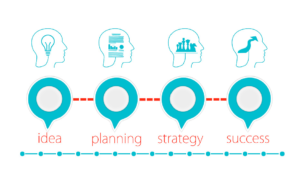Article written by Danielle Fugazy and provided courtesy of Axial.net
KLH Capital is a lower middle market private equity firm that specializes in making three types of investments: management buyouts (MBOs), recapitalizations, and family/generational successions. Founded in 2005, KLH has completed over 35 platform investments. Axial’s Middle Market Review sat down with James Darnell, a partner with the Tampa, Florida-based firm, to talk about when and why MBOs make sense for sellers and buyers, and other types of transactions that are happening in the lower middle market today.
What is a management buyout?
An MBO is a fancy term that private equity guys like to use to describe a situation when the management team that is currently running a business buys out some or all of the business’s existing shareholders, and in the process obtains some ownership in the company for themselves.
MBOs are really effective for management teams who have created a lot of value in the business and established themselves as the leadership of the company. These teams already understand their customer base and their market, and have demonstrated successful leadership skills. They make for good owners! They have created a great business, but they haven’t been able to fully enjoy the financial benefits as they aren’t owners themselves. To complete an MBO, the management team works with a private equity firm like ours to facilitate a liquidity event for the current shareholder(s), and through that transaction, the management becomes shareholders themselves, alongside us.
What are the advantages of completing an MBO?
The shareholder(s) who are selling the business or realizing liquidity are able to get fair market value for their business and ensure the company remains in the hands of people they already know and trust. Sellers also often feel they have done the right thing by both their employees and management teams when they sell to management.
For the new private equity investors, MBOs are a chance to invest in a deal that has a lower amount of risk than a typical deal because they are backing an incumbent management team that has already demonstrated they can lead that particular company. Lower risk for an investor is always a good thing.
The managers that are participating get ownership in the business going forward. They also continue to run and grow the business as they have been. Because of this ownership event, employees are usually happy and remain motivated. Employees’ biggest fear when there is a sale is that the new owners will try to steal the business or change the culture of a company. In the case of an MBO, management and employees should already share the same vision and values.
Are MBOs a popular strategy today?
There are many baby boomers who have enjoyed the growth of their businesses and would like to pursue retirement. The MBO option allows sellers to do something a little different from a regular sale or a recap. With a traditional recap, sellers will receive partial liquidity, but likely be asked to stick around for three or four years and then get a second bite at the apple. For business owners who want to step back, an MBO will speed up that process.
How does an MBO differ from an Employee Stock Option Plan (ESOP)?
With an MBO, the business owner is going to be able to realize more of the business’s value in cash immediately and can direct specific ownership amounts to key employees. With an ESOP, the seller will carry a note that pays out over time and they will likely need to personally guarantee the third-party financing to bond them to the business. An MBO is a clean break at full valuation.
How does KLH find businesses that want to participate in MBOs?
We find our business through a network of referral sources that we have developed over 15+ years. We network on a daily basis and help business owners understand their liquidity options and how private equity can play a part in their growth strategy or financial stability, or how we can help address any financial problems they may have.
Recaps are a big part of your business. When does it make sense to do a recap?
We frequently invest in recap transactions. In fact, we do more recaps than MBOs. They are similar transactions. The question is how involved the seller wants to be going forward? If you have an owner who is in full control, it’s hard to do a management buyout if there isn’t a management team to step in. If the seller can totally remove themselves, then an MBO may be a viable path for the seller to cash out fully.
How do generational transitions differ from recapitalizations and MBOs?
They are similar to both MBOs and recaps. Generational transitions happen when a younger generation of a family business wants to take over from prior generation(s). Often, the younger generation doesn’t want to mortgage the company to put all the money in the prior generation’s pockets. Additionally, it’s very hard for families to navigate the trickier parts of these types of transactions, like the equity and debt raises and the risk allocation between the “buyers” and “sellers.” It’s too personal and familial relationships are more important. A third party can usually provide the liquidity and help get the transaction completed on a more arms-length basis.
Is now the time to consider selling your business?
Complete the “Value Builder” questionnaire today in just 13 minutes and we’ll send you a 27-page custom report assessing how well your business is positioned for selling. Take the test now:





 In a perfect world, business owners sell their companies when banks are anxious to lend, the economy is strong, their industry is booming and the business is enjoying record profitability, with the future looking even brighter. Naturally, a perfect convergence of all these variables would enable you to maximize the value of your business allowing you to sell it at the highest price and on the best terms.
In a perfect world, business owners sell their companies when banks are anxious to lend, the economy is strong, their industry is booming and the business is enjoying record profitability, with the future looking even brighter. Naturally, a perfect convergence of all these variables would enable you to maximize the value of your business allowing you to sell it at the highest price and on the best terms.

